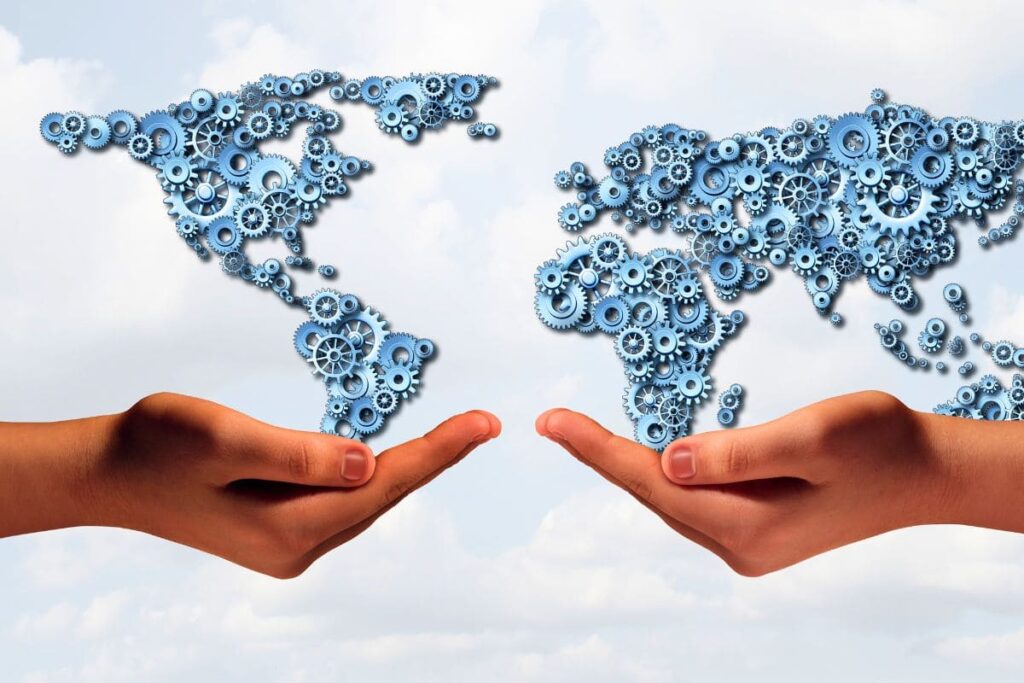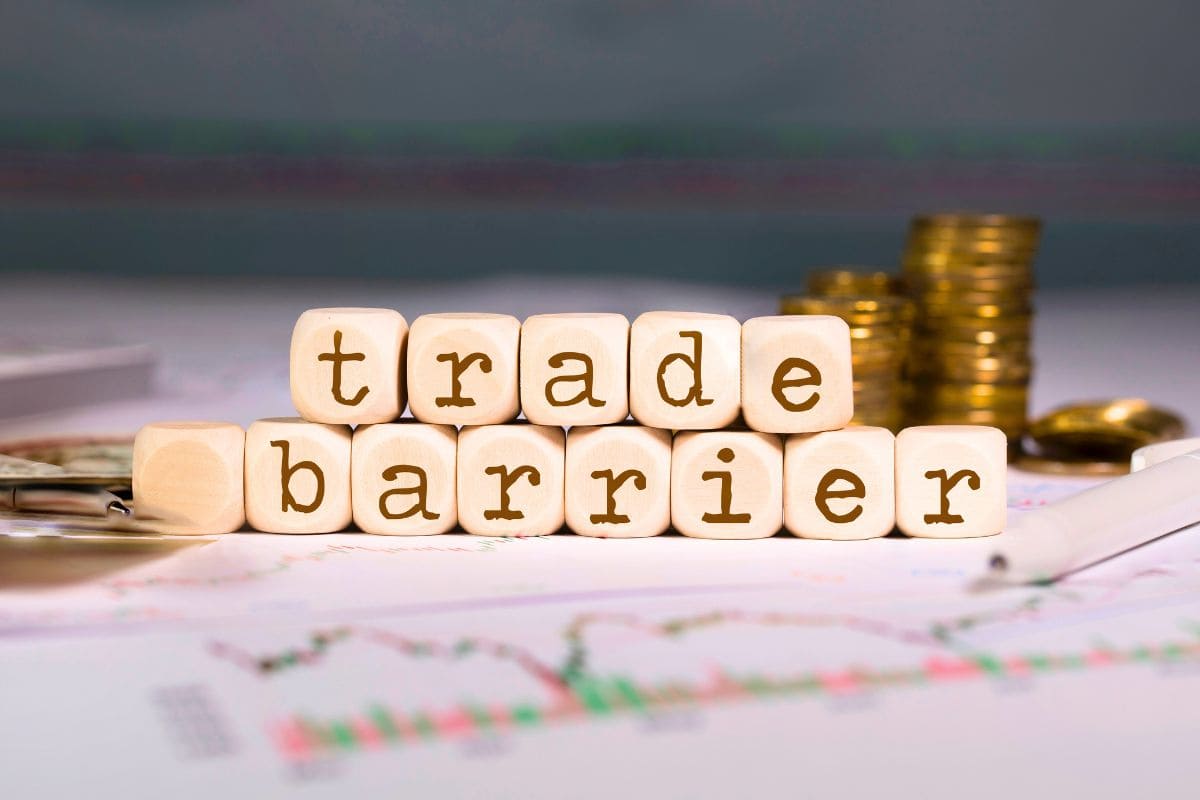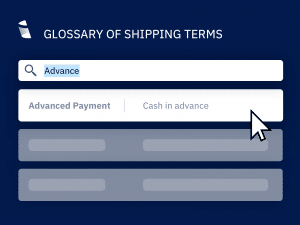What are Trade Barriers?
Trade barriers are restrictions imposed by governments on international trade. These barriers disrupt free trade by making it more difficult or costly to buy and sell goods across borders.
There are two main types of trade barriers: tariffs and non-tariff measures.
Tariffs are taxes placed on imported goods. They raise the cost of these goods, making them more expensive than locally produced products. This helps domestic businesses compete against foreign imports.
Non-tariff measures are other forms of restrictions that do not involve taxes. These include import quotas, subsidies, and specific product standards. Non-tariff measures can limit the amount of goods entering a country or make it harder for foreign products to meet local rules.
How Tariffs Impact International Trade
Tariffs are taxes that governments impose on imported goods. The primary purpose of tariffs is to protect domestic industries by making foreign products more expensive. When tariffs are applied, the cost of these imports increases, encouraging consumers and businesses to buy locally produced goods instead.
Tariffs impact both businesses and consumers in several ways. For domestic industries, tariffs act as a protective measure against foreign competition, helping local companies maintain or grow their market share. However, this protection can lead to higher prices for imported goods. When tariffs are placed on imports, the added costs are often passed on to consumers, making imported products more expensive. This can reduce consumer choice and raise overall expenses for buyers who rely on foreign goods.
In 2018, India imposed a 10% tax on imported key smartphone components like populated printed circuit boards (PCBs), camera modules, and connectors. This move aimed to boost local assembly under Prime Minister Narendra Modi’s phased manufacturing program. The higher taxes on imports made foreign smartphones more expensive, encouraging the purchase of locally assembled devices and supporting India’s goal of becoming a manufacturing hub. (source: India imposes 10 percent tax on import of key smartphone components – Reuters.com)
Anti-Dumping Duties as Trade Barriers
Anti-dumping duties are special tariffs that countries use to protect their local industries. They are applied when foreign companies sell goods at prices lower than in their home market. This practice can hurt local businesses by undercutting prices. Anti-dumping duties raise the cost of these imports to prevent unfair competition.
Types of Non-Tariff Barriers to trade
Non-tariff barriers are trade restrictions that do not involve taxes. They are often used to protect local industries or to control the market. Unlike tariffs, these barriers restrict trade through rules and regulations.
Some common non-tariff barriers include import quotas, subsidies, licenses, and regulations.
Import quotas limit the amount of a product that can enter a country. This reduces foreign competition and supports local businesses.
Subsidies are payments given to local companies to lower their costs. This makes local goods cheaper than imported ones, impacting the price of imported products.
Licenses require foreign companies to obtain permission before importing certain goods. This can restrict access to the market and protect local producers.
Regulations set standards that imported goods must meet, such as safety or quality rules. These requirements can make it more expensive or difficult for foreign products to compete.
Voluntary export restraints (VER) are another type of trade barrier. They limit the amount of goods a country can export. This can reduce market access for developing nations and make it harder for them to grow their economies.
Non-tariff barriers affect international trade by limiting the flow of goods and altering market dynamics. They can reduce the benefits of comparative advantage by making it harder for countries to trade freely. While these barriers protect local markets, they can also lead to higher prices and fewer choices for consumers.
Reasons Behind Trade Barriers

Governments impose trade barriers for several reasons. One main reason is to protect local industries from foreign competition. By making imported goods more expensive, tariffs help local businesses thrive.
There are also economic reasons for trade barriers. Tariffs and non-tariff barriers can protect jobs and reduce trade deficits. They can also encourage the growth of new industries by giving them a chance to develop without too much competition.
Political reasons also play a role. Some governments use trade barriers to respond to foreign policies or to strengthen national security. For example, a country might restrict imports of certain goods to protect its military or technology sectors.
Effects of Trade Barriers on Developing Countries
Trade barriers can have a big impact on developing economies. They make it harder for these countries to sell their goods and services in global markets. When tariffs are placed on imports from developing nations, their products become more expensive and less competitive.
Subsidies in richer countries also contribute to global inequality. These payments help local producers in wealthy nations sell their goods at lower prices. This hurts farmers and manufacturers in developing countries, who cannot compete with the cheaper, subsidized products.
For example, trade barriers often target agricultural exports from developing countries. High tariffs on fruits, vegetables, and other crops make these products more costly in foreign markets. This reduces sales and income for farmers in poorer nations, slowing their economic development.
The Role of International Organizations in Trade Barriers
In the past, countries used tariffs heavily to protect their markets. Over time, this led to conflicts and slowed down global trade. To address these issues, international organizations were created to promote fair trade and reduce barriers.
The World Trade Organization (WTO) is one of the key organizations that influence trade barriers. The WTO sets rules for international trade and helps resolve disputes between countries. It encourages members to reduce tariffs and avoid unfair trade practices.
Due to the efforts of the WTO and other organizations, there has been a shift from tariffs to non-tariff measures. International agreements have led many countries to lower their tariffs. As a result, they now use other methods, like quotas and regulations, to control imports and exports.
Multilateral agreements have played a significant role in reducing trade barriers. These agreements involve multiple countries agreeing to lower trade restrictions together. They make it easier for goods and services to move across borders, boosting global trade and economic growth.







